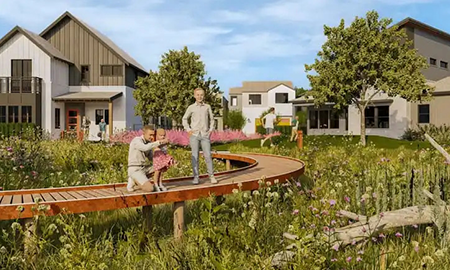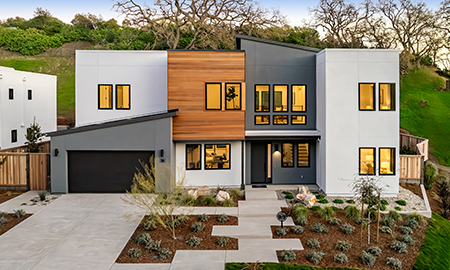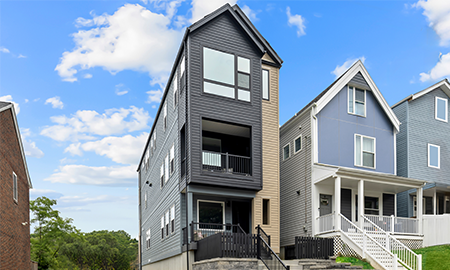Responding to a call for ideas, DAHLIN entered The LINK concept in the international architectural Zero Threshold design competition, receiving an Honorable Mention and McGregor Homes' People's Choice Award. Jurors of the competition recognized The LINK as an excellent planning project supported by very well-researched design, noting particularly, the idea of creating a multigenerational community that challenges some of the current thoughts on how we live in neighborhoods today.
Our current housing inventory is an echo; it's an artifact of a different time in our history.
"Young adults can't find homes that fit their means or lifestyle. Families need space to grow often including an aging parent. Seniors on fixed incomes have few choices. People want to live where they want and how they want, but lack the housing that makes it possible. The real adventure, the joy ride, is actually delivering value for people of more modest means."—Dr. Bill Thomas @ BUILD Conference
The LINK is a cluster of modular homes that address accessibility on a variety of fronts. It proposes efficient and affordable housing alternatives that champion diversity and inclusiveness in a shared communal environment. The solution looks at four key objectives: Transferability, Affordability, Accessibility/Responsiveness/Innovation, and Respecting the Neighborhood.
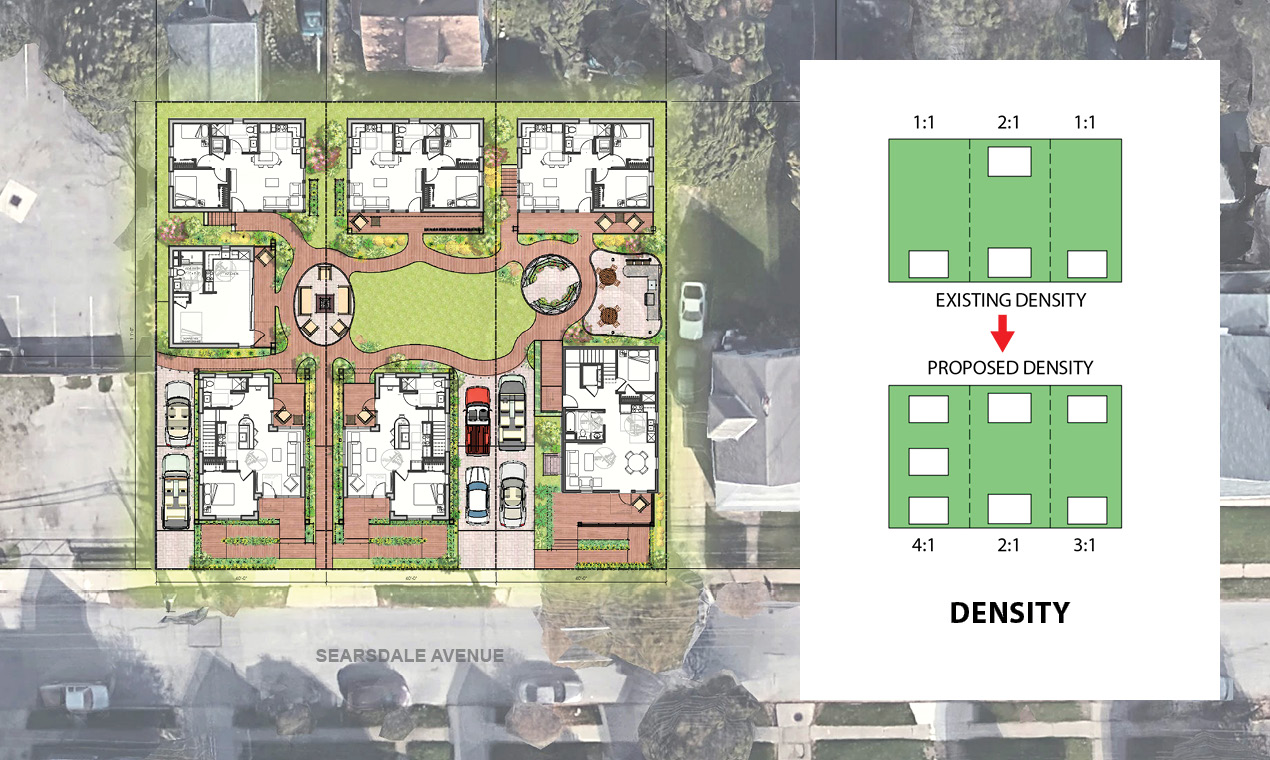
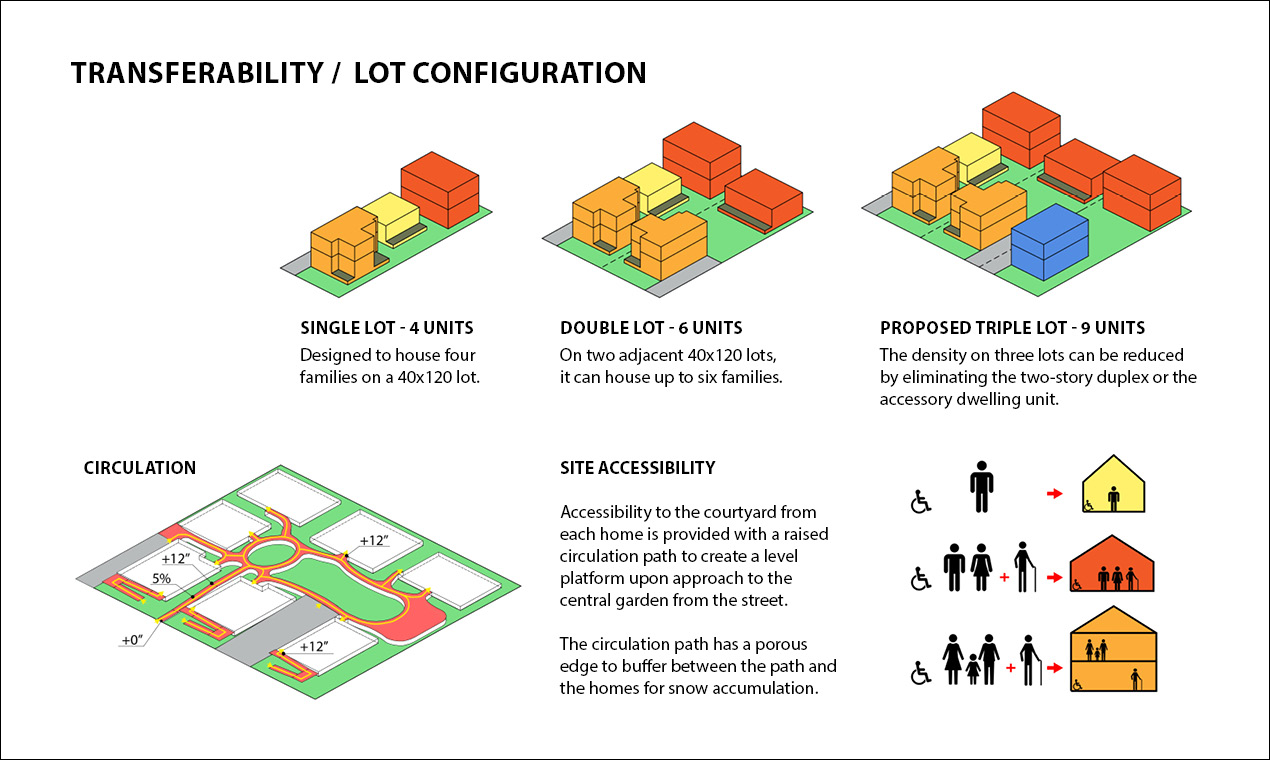
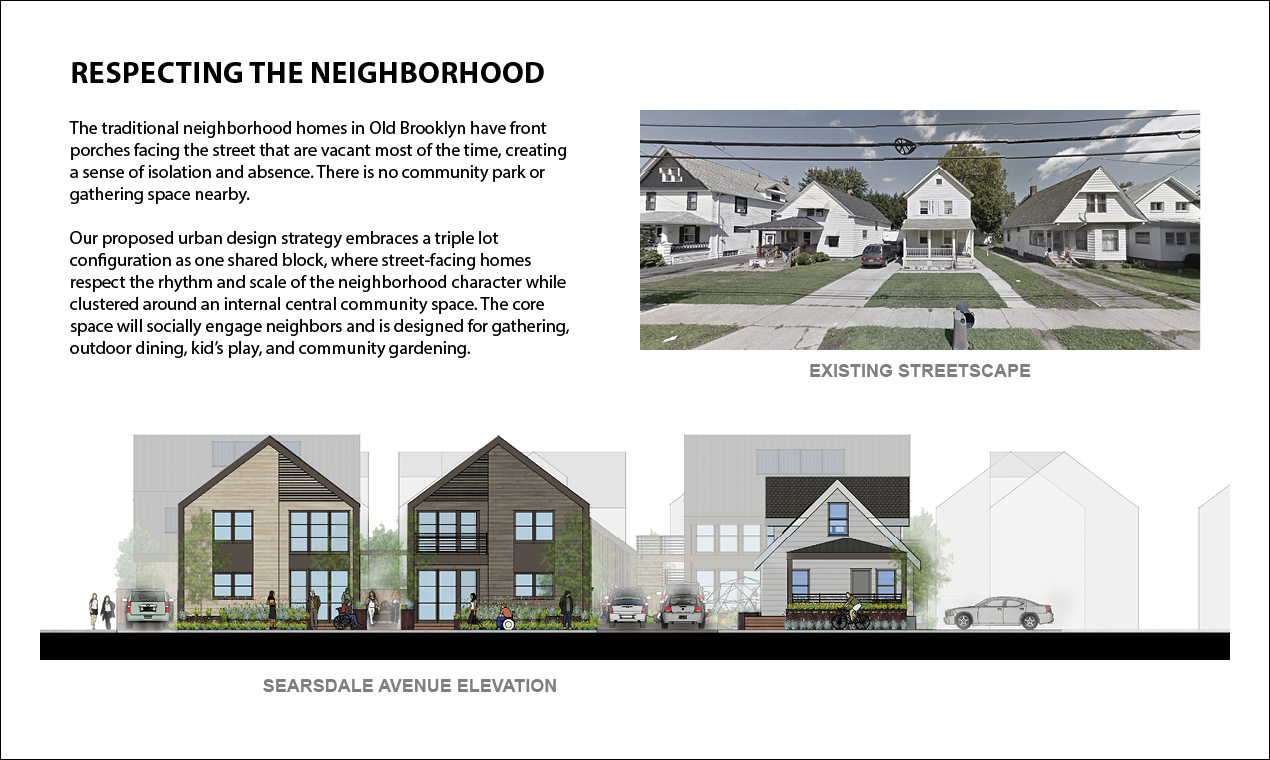
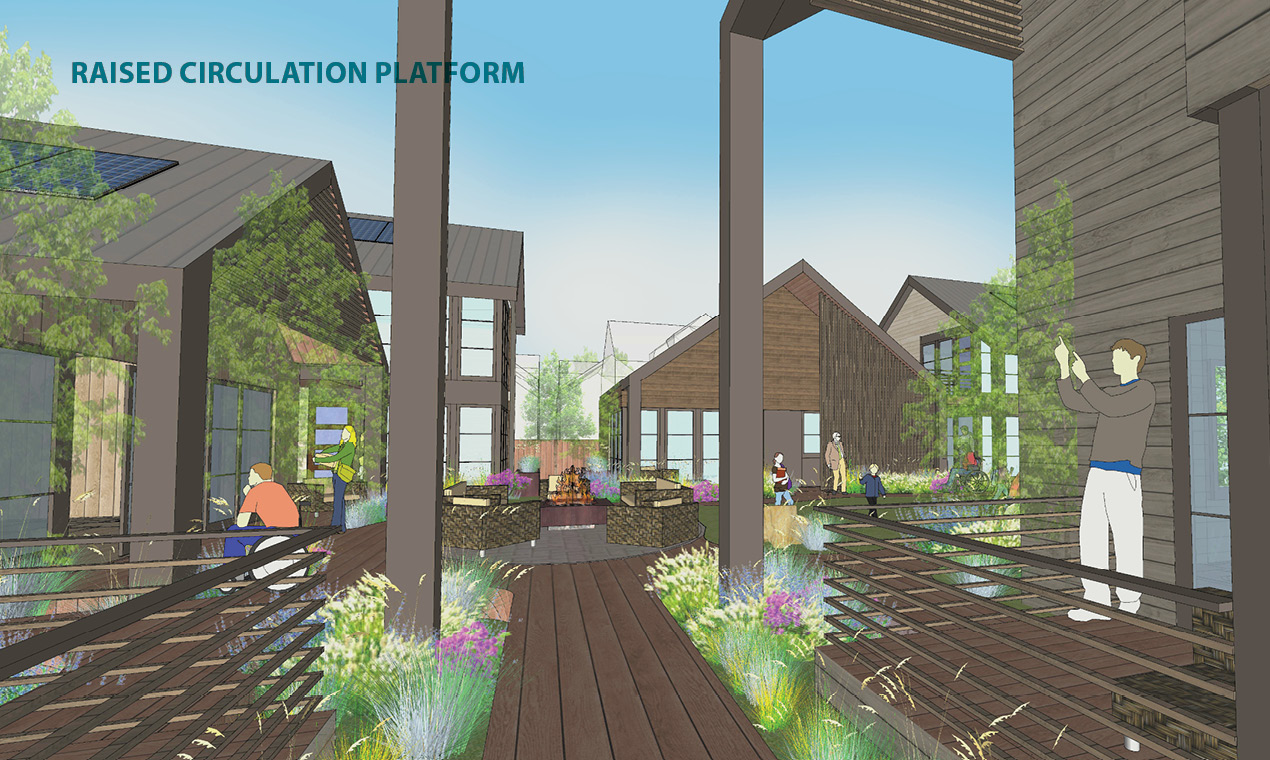

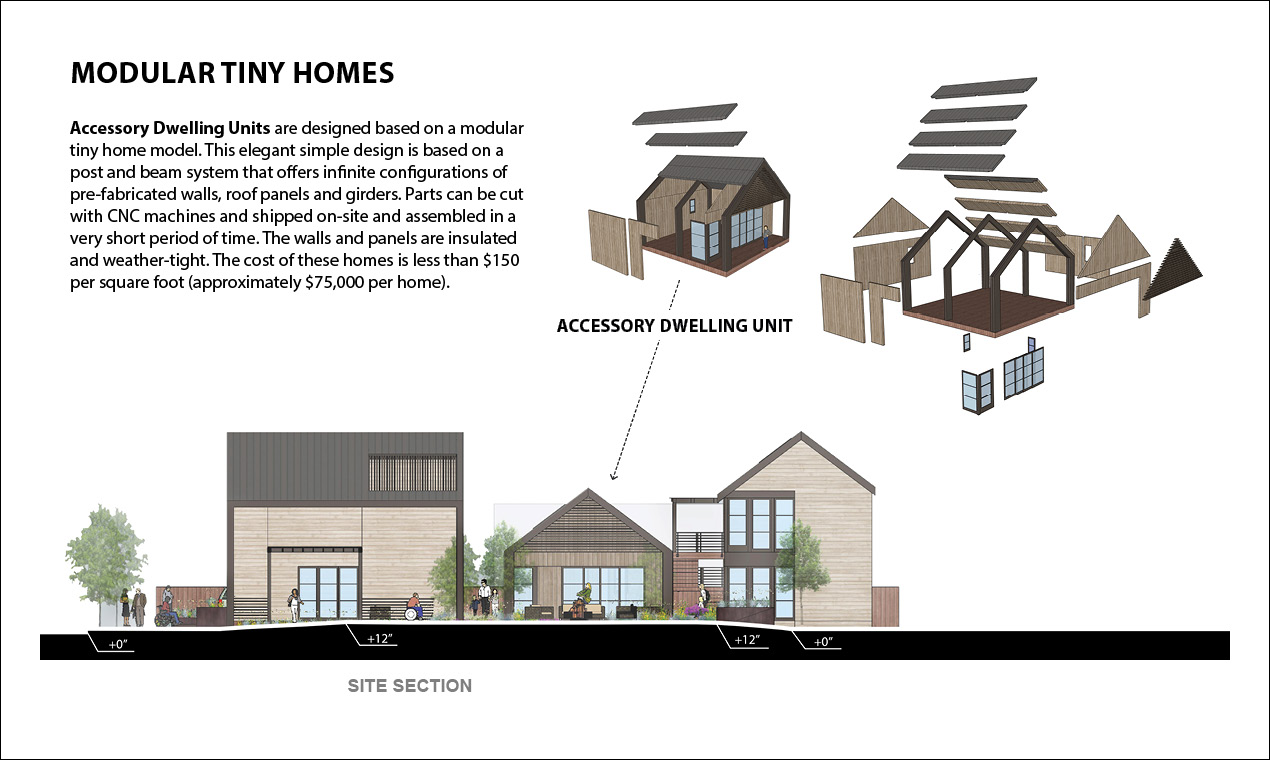

About the Competition
The Zero Threshold design competition was inspired by (dis)ABLED Beauty, an exhibition at the Kent State University Museum in 2016-17. The exhibition presented beautifully designed prostheses, hearing aids, and mobility devices for people living with disabilities, (dis)ABLED Beauty aimed to change the negative stigma associated with disability by presenting fashion-forward adaptive devices that make a virtue of necessity.
Zero Threshold applies a similar approach to the design of accessible housing. Instead of making accessible features as functional and invisible as possible, this competition challenges designers to celebrate the aesthetics of accessibility. The competition encompasses new residential construction, accessory dwelling units, interior design and retrofit of existing housing, accessible public space and landscape design, and holistic urban design strategies aimed at eliminating physical and social barriers in urban neighborhoods.
Zero Threshold uses a real neighborhood—Old Brooklyn in Cleveland, Ohio—as a stand-in for traditional urban neighborhoods throughout the United States and in other parts of the world. Competition entries were expected to respond to the local context while also expanding ideas about accessibility in ways that translate to other places.
For more information about Zero Threshold: https://zerothreshold.org/

